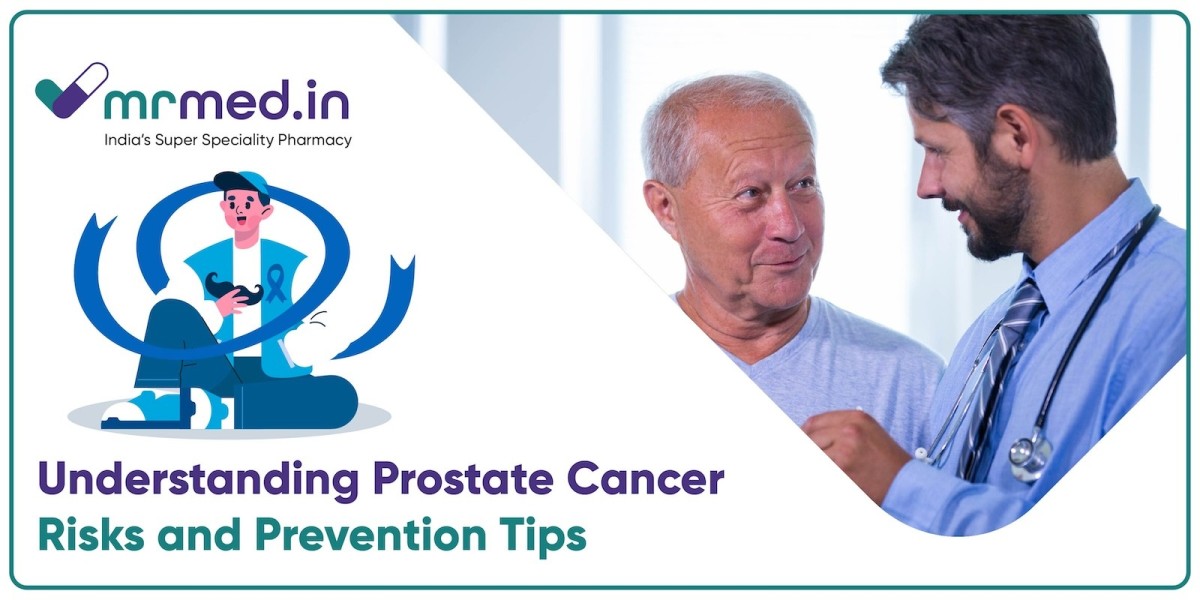Prostate cancer often lurks silently, showing no symptoms until it's well advanced. For many men, the thought of cancer is terrifying—but being informed can change the game. Prostate cancer is one of the most common cancers in men, yet awareness around its risks, prevention, and treatment options remains alarmingly low. Understanding this condition doesn’t just help with early detection but can also empower men to make healthier choices to reduce their risk.
Whether you're in your 40s or approaching retirement, knowing what factors increase your chances of developing prostate cancer—and what you can do to prevent it—can make all the difference. Let’s break down the essentials, covering risks, prevention strategies, and treatment options that every man should be aware of.
What Is Prostate Cancer and Why Should You Care?
It develops in the prostate gland, a small walnut-shaped organ that produces seminal fluid. It typically grows slowly, but some forms can be aggressive, spreading beyond the prostate if left unchecked.
According to the World Health Organization (WHO), prostate cancer is the second most common cancer in men globally. The risk increases with age, but lifestyle and genetic factors also play a significant role.
Who Is Most at Risk for Prostate Cancer?
Several factors can increase a man's likelihood of developing prostate cancer. While some are beyond your control, understanding them can help in making informed choices.
- Age: Prostate cancer risk increases significantly after age 50. Around 60% of cases are diagnosed in men over 65.
- Family History: If your father or brother had prostate carcinoma, your chances double. Genetics play an important role in determining your risk.
- Ethnicity: African-American men are at an elevated risk of developing aggressive prostate carcinoma compared to men of other ethnicities.
- Lifestyle and Diet: Foods high in red meat, processed foods, and low in fruits & veggies can increase risk. Lack of workouts may also contribute to higher susceptibility.
- Obesity: Being overweight not only raises the risk of developing prostate cancer but also increases the likelihood of an aggressive form of the disease.
How Can You Prevent Prostate Cancer?
Although certain risk factors cannot be changed, there are a few steps you can take to lower your risk of developing prostate cancer. Prevention starts with small, consistent changes in your lifestyle.
- Adopt a Healthy Diet: Load your plate with fruits, vegetables, and whole grains while reducing processed foods and red meats. Foods rich in lycopene, such as tomatoes, may have protective effects against prostate cancer.
- Stay Physically Active: Engaging in regular physical activity enhances overall well-being and aids in maintaining a healthy weight, reducing the risk of aggressive prostate cancer. Aim for at least 150 minutes of moderate-intensity activity per week.
- Limit Alcohol and Quit Smoking: Excessive alcohol consumption and smoking have been linked to higher cancer risks. Reducing alcohol intake and quitting smoking can contribute to better prostate health.
- Routine Screenings: Get regular PSA (Prostate-Specific Antigen) tests and digital rectal exams (DRE), especially after the age of 50—or earlier if you have a family history of prostate cancer.
How Is Prostate Cancer Diagnosed?
Early detection can significantly increase survival rates. Prostate cancer is typically detected through:
- PSA Test: It measures the level of prostate-specific antigen in the blood. Increased levels may indicate prostate issues, including cancer.
- Digital Rectal Exam (DRE): A physical exam where a doctor checks for irregularities in the prostate.
- Biopsy: If abnormalities are found, a biopsy is performed to confirm the presence of carcinoma cells.
Treatment Options for Prostate Cancer
Treatment regimens vary depending on the stage and aggressiveness of the cancer. The most common approaches include:
- Surgery: The process of removal of the prostate gland (prostatectomy) is usually recommended for localised prostate cancer.
- Radiation Therapy: High-energy rays are used to destroy carcinoma cells. This can be used as a primary treatment or after surgery if cancer cells remain.
- Hormone Therapy: AKA androgen deprivation therapy (ADT), this approach reduces the levels of male hormones (androgens), which fuel prostate cancer growth.
Eligard injection is a form of hormone therapy used to manage advanced prostate cancer. It contains Leuprolide Acetate, which suppresses testosterone production, slowing or stopping cancer growth. Eligard is often used when surgery or radiation isn’t an option or after other treatments to prevent cancer from returning.
While hormone therapy doesn’t cure prostate cancer, it can control the disease, providing relief from symptoms and improving the quality of life in patients with advanced cases.
Final Thoughts
Prostate cancer may be a silent threat, but armed with the right information, men can significantly reduce their risk and improve outcomes. Screening, lifestyle changes, and understanding treatment options—such as the role of hormone therapy can empower men to take control of their health.
Don’t wait for symptoms to appear. Talk to your doctor, stay proactive, and prioritise your prostate health.



